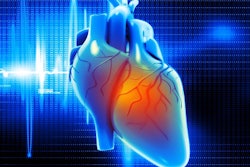Tuesday, November 27 | 3:50 p.m.-4:00 p.m. | SSJ21-06 | Room N229
A new virtual dual-energy imaging technique may be the solution to the difficult task of detecting lung nodules that overlap ribs and clavicles on chest x-rays.The model uses a deep-learning convolutional neural network (CNN) to convert standard chest x-rays into dual-energy bone and soft-tissue images. Amin Zarshenas, a doctoral candidate in electrical and computer engineering at the Illinois Institute of Technology in Chicago, will present details on the virtual dual-energy (VDE) process, which features two convolutional layers and nine residual blocks to create a deep 20-layer CNN.
First, the researchers trained the model to discern the relationship between "input" chest x-rays and the corresponding "teaching" dual-energy bone images. They then trained and evaluated the model with a twofold cross-validation protocol. Once trained, the model provided VDE bone images where soft tissue was substantially attenuated, while bony structures were preserved. The image was then subtracted from the corresponding chest x-ray to provide a virtual dual-energy soft-tissue image from which bones were removed.
In the end, the VDE technique accurately separated ribs and clavicles from lung nodules and soft-tissue structures in all 118 chest x-rays and provided bone and soft-tissue images, the researchers noted.
"VDE technology requiring only a 'single' chest radiograph without requiring specialized equipment or additional radiation dose would be beneficial to radiologists," as well as computer-aided detection in detecting lung nodules in chest x-rays, Zarshenas and colleagues wrote.



















